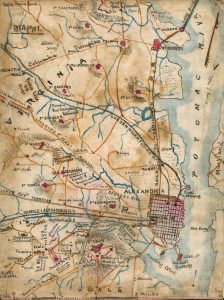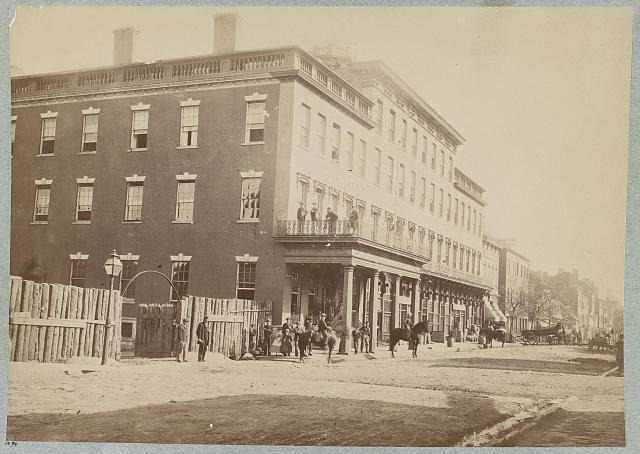Occupied Cities of the South: Alexandria, Virginia

Ripples of fear and uncertainty spread throughout the United States when war broke out between the North and the South in 1861. In every state, citizens worried that war could arrive at their front door at any moment. Nowhere was this fear more intense than in Alexandria, Virginia.
Alexandria was a bustling seaport town located near the United States Capital of Washington, D.C., a natural hub for economic trade. When war broke out, Alexandria became a strategic target desired by both sides. President Abraham Lincoln knew the town must remain in Union hands, for if the Confederates were to capture it they could use it as a staging ground to launch an attack on the Capital. Within days of Virginia’s secession from the United States, Union troops arrived and established control. Beginning May 24th, 1861, Alexandra would be a location occupied by the North.
Interestingly, one of the first casualties of the Civil War for the Union occurred in Alexandria. The man’s name was Colonel Elmer Ellsworth, and his first action upon reaching Alexandria was to remove a large Confederate flag from atop the Marshall House Hotel. The hotel’s proprietor, James Jackson, shot Ellsworth as he descended the hotel stairs with the flag in his hands. Jackson, loyal to the South, had vowed the flag would be removed only over his dead body. His vow was fulfilled moments later when Ellsworth’s comrade shot him at point blank range.
Needless to say, the occupation of Alexandria by Union troops would forever change the character of the city and the lives of its inhabitants. Within days, Alexandria transformed into a supply center for the Federal Army whose port and railroad would play a major role in the transportation of goods and men during the war.
Some of the Civil War’s bloodiest conflicts took place near Alexandria – the Battle of Fredericksburg, the First Battle of Bull Run, and the Battle of Chancellorsville, to name a few – and many of its buildings were transformed into hospitals to accommodate the growing number of wounded soldiers.

The close proximity of the fighting was yet another reason to boost the town’s defenses, and it was during the early months of the Civil War that Union forces established forts around the city – some of which remain to this day. Lucky for Alexandria’s residents, the fighting would never break through into the town itself.
Two years into the Union’s occupation, New York Herald correspondent George Alfred Townsend would write, “Alexandria is filled with ruined people; they walk as strangers through their ancient streets, and their property is no longer theirs to possess…[Alexandria] has become essentially a military city. Its streets, its docks, its warehouses, its dwellings, and its suburbs have been absorbed to the thousand uses of war.”
The once-bustling town of Alexandria was no more. Mail service was suspended and martial law declared. The only churches allowed to hold services were those that agreed to pray for President Lincoln and the only businesses allowed to function were those whose owners agreed to sign oaths of allegiance to the North.
On a brighter note, the Union occupation made Alexandria a safe haven for slaves escaping from the South. By the end of the war, an estimated 20,000 former slaves reached freedom in Alexandria.
Though Alexandria and its inhabitants remained safe until the end of the war, the town was forever changed by the occupation of Union troops. It’s economy was virtually nonexistent, as were those of many southern cities. Some would say the cause of the town’s occupation was also it’s saving grace: though it would take many years for the town to recover, its proximity to the Capital helped boost its economy and attract new residents as the United States started to recover from the Civil War that had torn it apart.
Were southern cities “occupied “ or “liberated”? I submit that the twenty thousand freed slaves living there would have used the second word.
Even closer than the battles of Manassas, Fredericksburg or Chancellorsville was the battle of Chantilly (Ox Hill) involving two Union divisions and Stonewall Jackson’s corps of the ANV, fought at the western doorsteps of an underguarded Fairfax City, VA, 20 miles from 713 King Street, Alexandria.
Damn Yankees!! Sounds like Russian Occupied Ukraine to me!
Those who still claim Col. Ellsworth was a “housebreaker and a thief” need to look up the definition of martial control.
Darwin Awards for Ellsworth and Jackson both. About sums up the war itself.
My great great grandfather joined the 17th VA infantry while being a resident of Alexandria. He wasn’t able to return home until afrer the war.